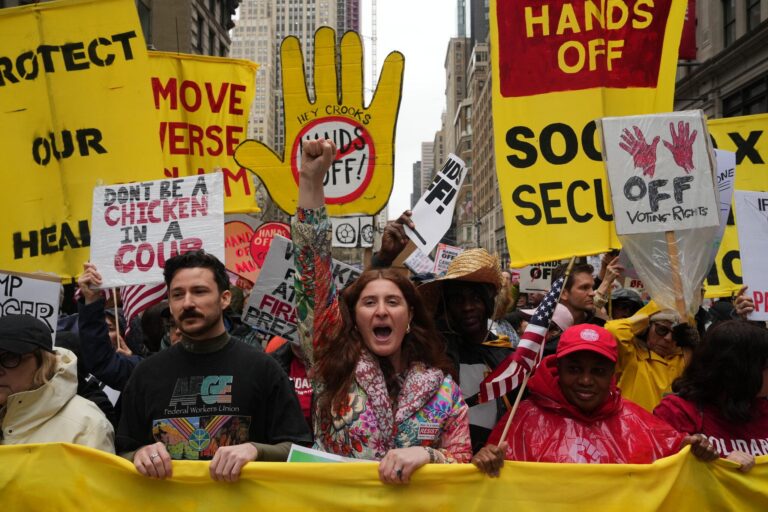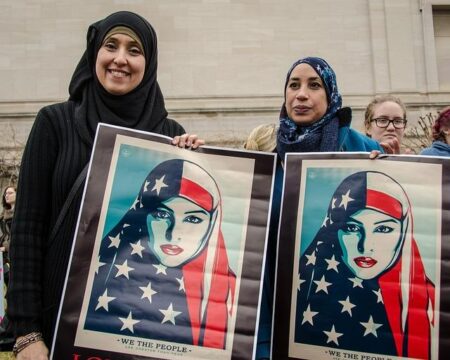Teargas was deployed across multiple cities in the United States as authorities moved to disperse anti-Trump protests, marking a turbulent night of demonstrations and confrontations. From coast to coast, law enforcement faced off against crowds expressing dissent over the administration’s policies, with scenes of unrest unfolding in real time. This article provides a detailed, moment-by-moment account of the protests and the government’s response, capturing the intensity and complexity of the nationwide unrest.
Teargas Deployment Escalates Tensions at Anti-Trump Demonstrations
Across multiple cities, law enforcement agencies resorted to the use of teargas in an effort to control growing crowds of anti-Trump demonstrators. The clashes quickly escalated, resulting in chaotic scenes marked by shouting, running, and occasional physical confrontations. Reports from witnesses highlighted the overwhelming pungent cloud that permeated the air, forcing protesters to seek refuge behind barricades or flee the affected areas. Authorities justified the deployment citing concerns over public safety and property damage.
- New York: Heavy teargas deployment near Times Square
- Los Angeles: Officers used tear gas to break up groups blocking major highways
- Chicago: Several arrests made following the dispersal
- Seattle: Intensified clashes after teargas use on peaceful assembly
Below is a snapshot of reported incidents and law enforcement responses during the demonstrations:
| City | Incident | Law Enforcement Action | Casualties/Injuries |
|---|---|---|---|
| New York | Blockade at Times Square | Teargas and baton charges | 12 treated for respiratory issues |
| Los Angeles | Protesters blocked highways | Use of non-lethal projectiles | 8 arrested, 3 injured |
| Chicago | Occupation of public park | Dispersal using teargas | 10 arrested, no major injuries |
| Seattle | March to city hall turned violent | Teargas after stone-throwing | 5 injured policemen |
Civil Rights Groups Condemn Use of Force Amid Growing Protests
Leading civil rights organizations have voiced strong opposition to the escalating use of force by law enforcement during recent demonstrations. Advocates argue that the deployment of teargas and aggressive crowd control tactics not only endangers peaceful protesters but also erodes trust between communities and authorities. Numerous groups urge for restraint and adherence to constitutional rights, stressing that the right to protest must be protected without intimidation or violence.
In response to the unrest, these organizations are calling on federal and local governments to implement the following measures:
- Immediate review and suspension of excessive force protocols
- Increased transparency and accountability for officers involved in confrontations
- Investment in community-based dialogue and de-escalation training
- Legal support for those unlawfully detained or injured during protests
| Organization | Position | Actions Urged |
|---|---|---|
| NAACP | Condemn use of teargas | End militarized policing |
| ACLU | Demand civil liberties protection | Monitor protester rights |
| Human Rights Watch | Investigate abuses | Promote accountability |
Analysis of Law Enforcement Strategies and Crowd Control Effectiveness
Law enforcement responses to the ongoing anti-Trump protests have sparked intense debate regarding the balance between maintaining public order and upholding citizens’ rights to peaceful assembly. Tactical deployment of teargas and other crowd control measures such as rubber bullets and mounted police have been prevalent in multiple cities, effectively dispersing large gatherings but also raising concerns over escalation and excessive force. The strategic use of teargas, while providing immediate crowd dispersal, has sometimes led to unintended injuries and heightened tensions, suggesting a need for re-evaluation of deployment protocols.
Analysis reveals key factors influencing the effectiveness and perception of these strategies:
- Timing of Intervention: Early and proportionate responses tend to prevent rallies from escalating into violent confrontations.
- Communication Tactics: Clear warnings and engagement with protest organizers can reduce misunderstandings and resistance.
- Use of Force Continuum: Graduated force application helps avoid sudden escalation and preserves community trust.
| City | Protest Size | Law Enforcement Tactics | Effectiveness Rating |
|---|---|---|---|
| Portland | Large (5,000+) | Teargas, Mounted Units | Moderate |
| Seattle | Medium (2,000-3,000) | Rubber Bullets, Warnings | High |
| Atlanta | Small (under 1,000) | Verbal De-escalation | Very High |
Ultimately, law enforcement agencies face the challenge of adapting crowd control practices to rapidly shifting protest dynamics while minimizing public harm. Emphasizing transparency, community communication, and measured use of force remains crucial to fostering trust and effectiveness in managing civil unrest.
Recommendations for Balancing Public Order and Protecting Protester Rights
Striking a balance between maintaining public order and safeguarding the rights of protesters requires nuanced strategies that respect democratic freedoms while ensuring safety. Law enforcement agencies should prioritize de-escalation techniques and foster open communication channels with protest organizers to minimize misunderstandings and prevent violence. The deployment of force—especially chemical agents like teargas—must be governed by strict guidelines that emphasize proportionality and accountability to avoid infringing on legitimate expressions of dissent.
Key recommendations include:
- Comprehensive training for officers on crowd psychology and nonviolent intervention methods.
- Clear protocols outlining when and how crowd control measures may be employed.
- Independent oversight bodies to review incidents and hold authorities accountable.
- Real-time communication with media and public to maintain transparency.
| Priority | Action | Outcome |
|---|---|---|
| High | Engage protest leaders prior to events | Reduced tension and clearer expectations |
| Medium | Use body cameras on officers | Improved accountability and evidence integrity |
| Low | Limit teargas use to absolute necessity | Preserved public trust and fewer health risks |
Insights and Conclusions
As the nation continues to grapple with deep political divisions, the use of teargas to disperse anti-Trump protests underscores the ongoing tensions between law enforcement and demonstrators. The unfolding events serve as a stark reminder of the challenges facing public order and civil liberties in a charged political climate. The situation remains fluid, with further developments expected as protests persist across the United States. The Guardian will continue to provide comprehensive coverage as the story evolves.




